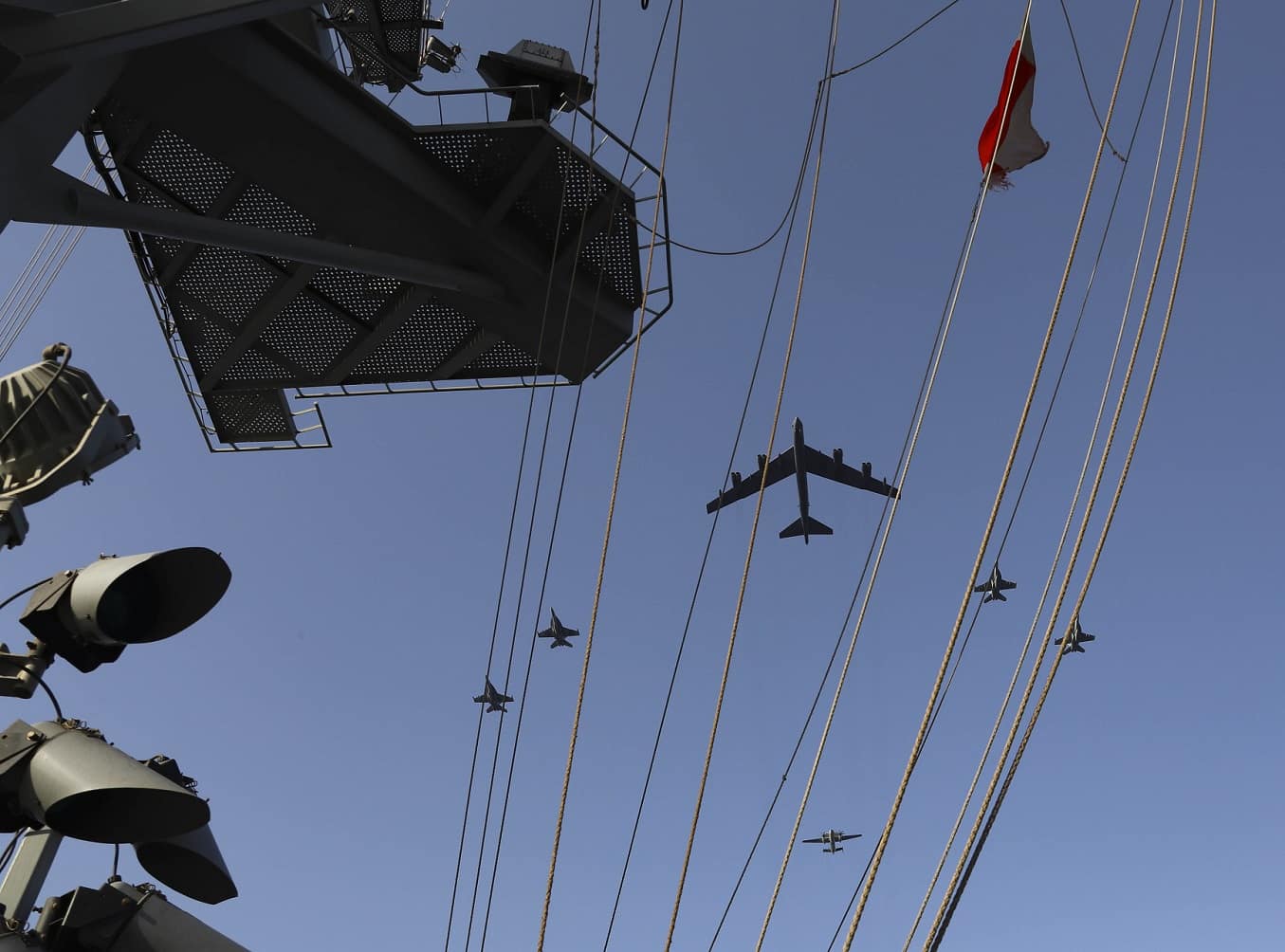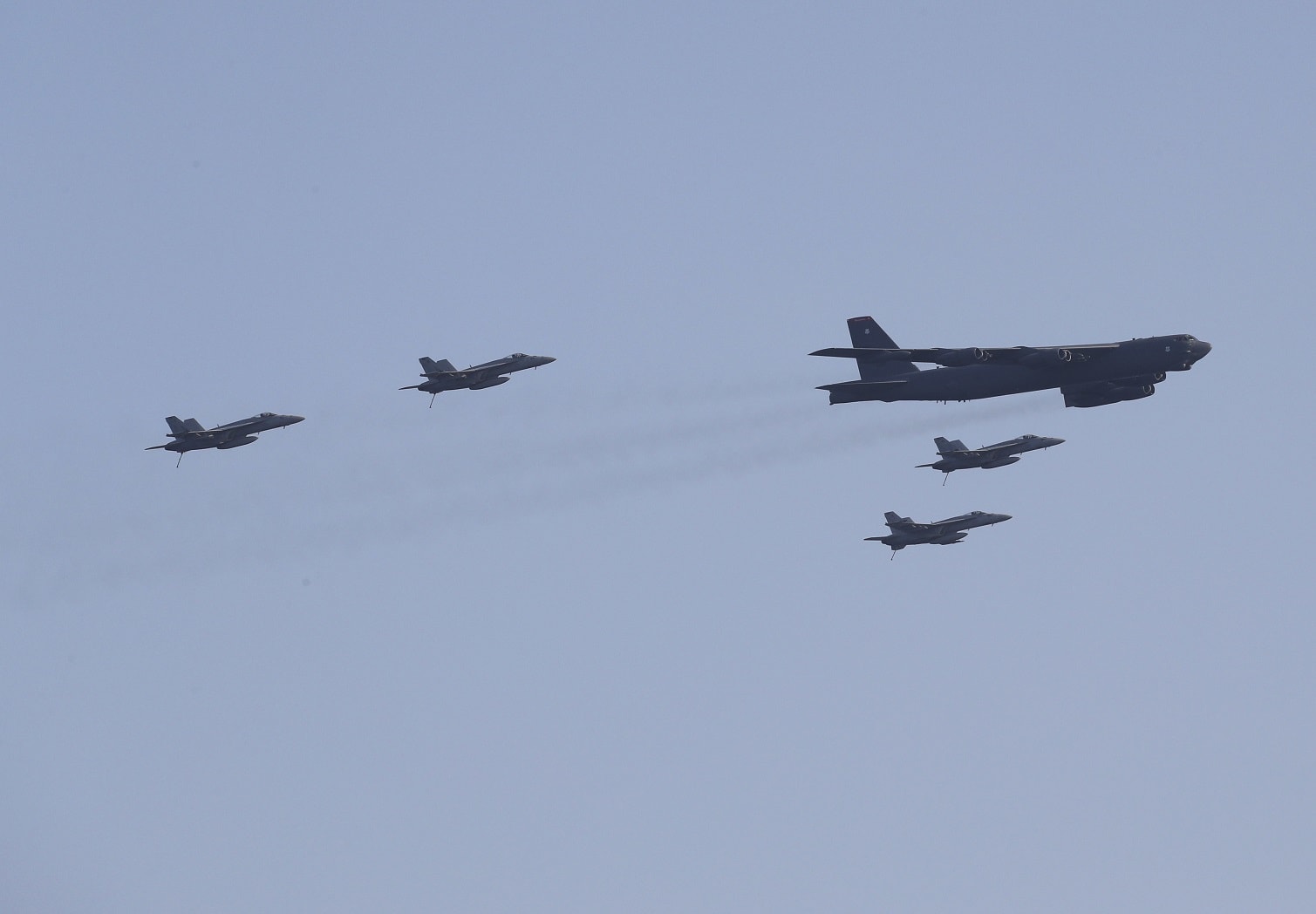F/A-18E conducts impressive self-escort strike with B-52H bomber during joint exercises
Posted on
F/A-18E Super Hornet fighter aircraft and E-2D Advanced Hawkeye carrier-capable tactical airborne early warning (AEW) aircraft from Carrier Air Wing (CVW) 7, embarked on the Nimitz-class aircraft carrier USS Abraham Lincoln (CVN 72), conducted a self-escort strike with an Air Force B-52H bomber assigned to the 20th Expeditionary Bomb Squadron and part of the Bomber Task Force.
Carrier Air Wing (CVW) 7, attached to the Abraham Lincoln Carrier Strike Group (ABECSG), and A U.S. Air Force B-52H Stratofortress, assigned to the 20th Expeditionary Bomb Squadron and part of the Global Strike Command Bomber Task Force, conducted joint operations in the U.S. Central Command area of responsibility, June 1.
The operations emphasize Joint Force integration and interoperability within the U.S. Department of Defense.
“The training we are doing with the Air Force showcases our ability to coordinate quickly amongst branches and results in an increase of our country’s lethality and agility to respond to threats if called upon,” said Capt. William Reed, commander, CVW-7.
During the exercises, CVW-7 and the 20th Expeditionary Bomb Squadron conducted several joint training evolutions designed to improve operational tactics in several warfare areas. Exercises included air-to-air training, flying in formation, and simulated strike operations in defense of a national asset.
“While the Air Force trains different assets together all the time, including Navy F-18s, we typically don’t have the opportunity to integrate with the surface fleet,” said Lt. Col. Scott Mills, 609th Air and Space Operations Center air and space strategist. “As we train together, it gives us the chance to examine the bias we each bring to the engagement. We each learn about the other’s domain by searching for areas where we operate differently.”
The B-52H Stratofortress is a long-range, subsonic, jet-powered strategic bomber that has been operated by the U.S. Air Force since 1955. The aircraft can carry up to 70,000 pounds of weapons and has a typical combat range of more than 8,800 miles. It’s anti-ship and mine-laying capabilities make it a highly-effective asset to assist the Navy in ocean surveillance.
“Each of our respective services influences the other,” Mills said. “Future conflicts will likely never be restricted to a single domain, and even then the sister services can enhance the effectiveness of the others. Today’s mission represents our ability to project air and sea power around the globe. When we act, we do so as one force, no separate services. Exercises like the one held today ensure that can operate anywhere, anytime.”
CVW-7 Super Hornets conducted a joint close air support (CAS) exercise with the Bomber. Additionally, MH-60R Sea Hawk helicopters from CVW-7, along with the B-52H, conducted strike coordination and reconnaissance (SCAR) exercises. The exercise provided a rare training opportunity as it joined multiple tactical aircraft that don’t often operate in the same airspace.



Subscribe to our newsletter
Promotions, new products and sales. Directly to your inbox.
